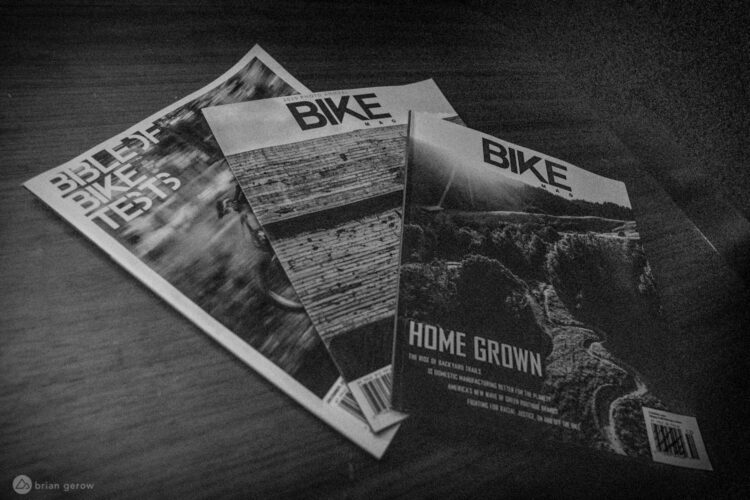
I’ve always been a map geek. I can spend hours poring over a good topo map, planning routes and imagining what each spot will look like on the ground. That love of great outdoor maps is what led Singletracks to start posting trail maps online 13 years ago, and it’s what drives us to keep up with the latest online mapping technology today. Still, sometimes there just isn’t a substitute for the tried-and-true, fold-out paper topo map.
Even with the latest and greatest mapping apps and online resources, Greg and I often use fold-out topo maps when we’re exploring mountain bike trails in a new area. As a compact and efficient source of information, printed maps allow the user to get an overview of all the trails in an area at a glance without having to pan and zoom ad nauseum.
Fold out maps also make route planning a cinch. Not only does a good map show how trails link up with one another, a good map will also show paved, dirt, and even jeep roads that can be used to lengthen or shorten a ride. This is particularly helpful when you’re out on the trail and need to find a shortcut back to civilization due to a mechanical or injury.
It takes a lot of work to create high quality topo maps for recreational users, and local knowledge is critical. Most professional fold-out maps are created by trail enthusiasts who have spent years exploring the areas they cover. The map makers are often the first to know about changes, as they regularly head into the backcountry to verify data on the ground.
This fall I asked Scott Rapp, AdventureMaps.net owner if he would be available to meet up at Interbike. His reply: “I haven’t made it to Interbike in years. It’s a busy time of year for us trying to get trail research done before the weather turns.” On the one hand it sounds like a great job–exploring and mapping new trails–but it’s actually a ton of work. Fortunately, for the price of a map we can all stick a knowledgeable, virtual, and local guide like Scott in our back pockets.
The best fold-out topo maps often include information about recreational points of interest within a given area, including campgrounds, waterfalls, parking lots, and even drinking water. With the right map, you can truly choose your own adventure, from a short morning ride to a full-on, multi-day bikepacking trip.
Clearly, paper maps have some disadvantages over digital topo maps–they’re not updated as frequently, aren’t available instantly, they don’t show your current location on the map, and they’re limited in the area they can cover. However, printed maps don’t need batteries or data service, and they still work even if they get wet (most, if not all, are printed on waterproof/tearproof paper). They’re also lightweight and easy on the eyes, even in direct sunlight.
We still think there’s a place for both digital and printed topo maps for mountain biking, so Singletracks continues to add new ways to help riders find the mapping solution that works best for them. All of our digital maps are available for download in PDF format for printing (even on waterproof paper), and we’ve also recently hand-selected some of the best fold-out topo maps and made them available in our online store.
As you start to plan your outdoor adventures for 2014, don’t forget about the lowly paper map. Even though they’ve been used for hundreds of years, paper maps aren’t quite ready for the dust bin yet!



















